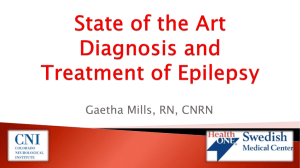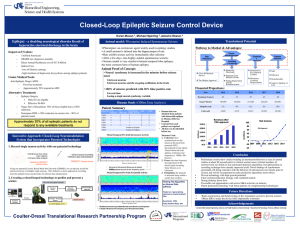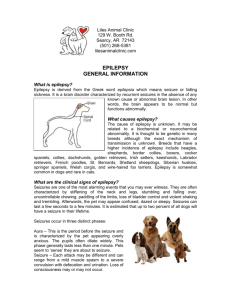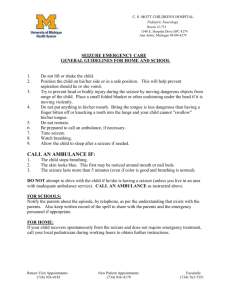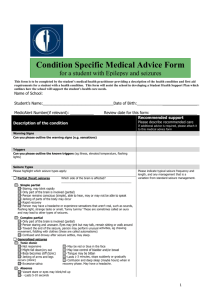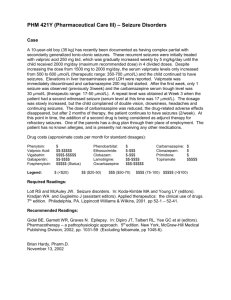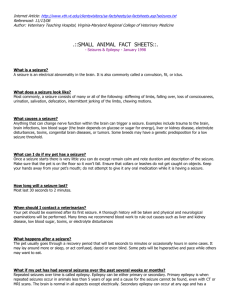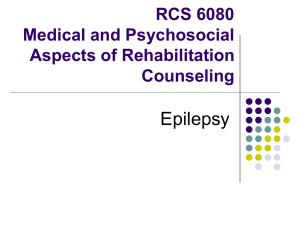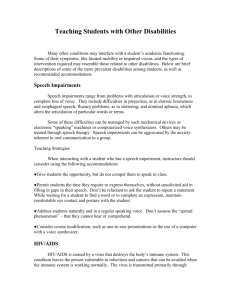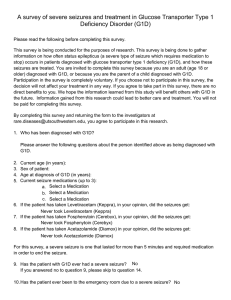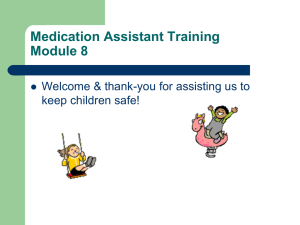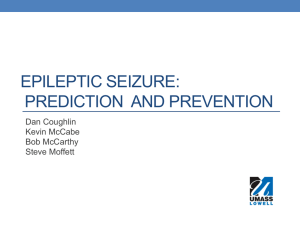CARDIOLOGY - Saint Francis Veterinary Center
advertisement
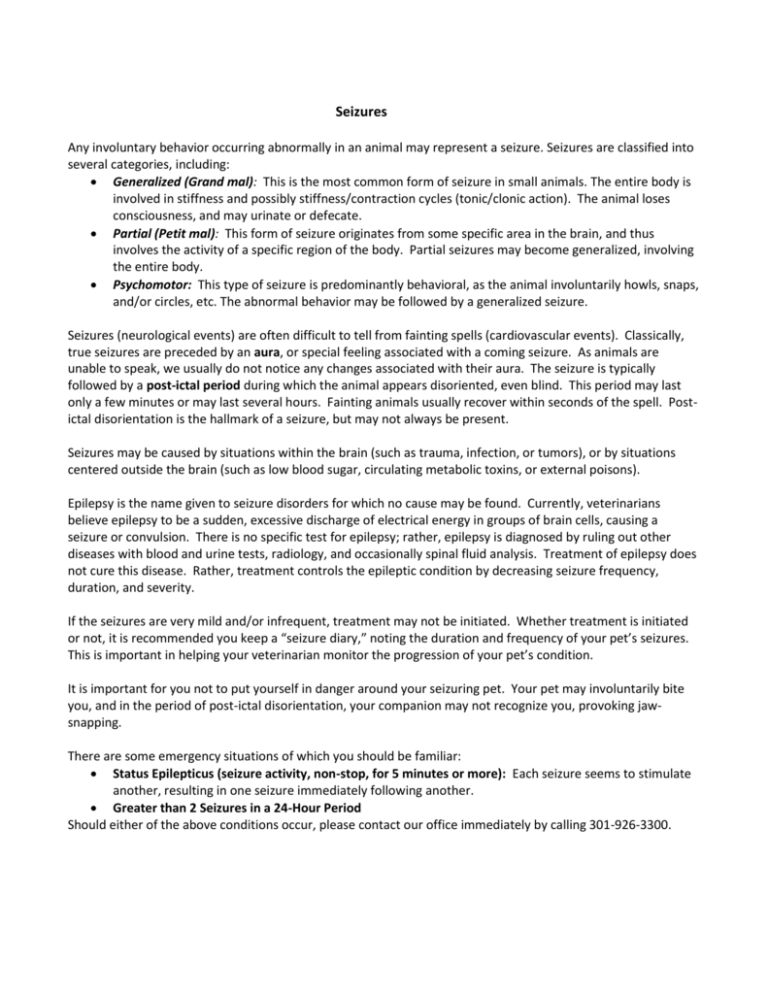
Seizures Any involuntary behavior occurring abnormally in an animal may represent a seizure. Seizures are classified into several categories, including: Generalized (Grand mal): This is the most common form of seizure in small animals. The entire body is involved in stiffness and possibly stiffness/contraction cycles (tonic/clonic action). The animal loses consciousness, and may urinate or defecate. Partial (Petit mal): This form of seizure originates from some specific area in the brain, and thus involves the activity of a specific region of the body. Partial seizures may become generalized, involving the entire body. Psychomotor: This type of seizure is predominantly behavioral, as the animal involuntarily howls, snaps, and/or circles, etc. The abnormal behavior may be followed by a generalized seizure. Seizures (neurological events) are often difficult to tell from fainting spells (cardiovascular events). Classically, true seizures are preceded by an aura, or special feeling associated with a coming seizure. As animals are unable to speak, we usually do not notice any changes associated with their aura. The seizure is typically followed by a post-ictal period during which the animal appears disoriented, even blind. This period may last only a few minutes or may last several hours. Fainting animals usually recover within seconds of the spell. Postictal disorientation is the hallmark of a seizure, but may not always be present. Seizures may be caused by situations within the brain (such as trauma, infection, or tumors), or by situations centered outside the brain (such as low blood sugar, circulating metabolic toxins, or external poisons). Epilepsy is the name given to seizure disorders for which no cause may be found. Currently, veterinarians believe epilepsy to be a sudden, excessive discharge of electrical energy in groups of brain cells, causing a seizure or convulsion. There is no specific test for epilepsy; rather, epilepsy is diagnosed by ruling out other diseases with blood and urine tests, radiology, and occasionally spinal fluid analysis. Treatment of epilepsy does not cure this disease. Rather, treatment controls the epileptic condition by decreasing seizure frequency, duration, and severity. If the seizures are very mild and/or infrequent, treatment may not be initiated. Whether treatment is initiated or not, it is recommended you keep a “seizure diary,” noting the duration and frequency of your pet’s seizures. This is important in helping your veterinarian monitor the progression of your pet’s condition. It is important for you not to put yourself in danger around your seizuring pet. Your pet may involuntarily bite you, and in the period of post-ictal disorientation, your companion may not recognize you, provoking jawsnapping. There are some emergency situations of which you should be familiar: Status Epilepticus (seizure activity, non-stop, for 5 minutes or more): Each seizure seems to stimulate another, resulting in one seizure immediately following another. Greater than 2 Seizures in a 24-Hour Period Should either of the above conditions occur, please contact our office immediately by calling 301-926-3300.



